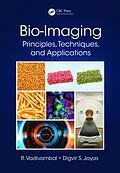Highlights the Emergence of Image Processing in Food and AgricultureIn addition to uses specifically related to health and other industries, biological imaging is now being used for a variety of applications in food and agriculture. Bio-Imaging: Principles, Techniques, and Applications fully details and outlines the processes of bio-imaging applica
Autorentext
Dr. Digvir S. Jayas, distinguished professor, was educated at the G.B. Pant University of Agriculture and Technology, Pantnagar (India); the University of Manitoba (Canada); and the University of Saskatchewan (Canada). He is vice president (Research and International) at the University of Manitoba, Winnipeg, Canada. He has authored or coauthored more than 800 technical articles in scientific journals, conference proceedings, book chapters, and conference papers. Jayas has collaborated with researchers in several countries, but has had a significant impact on the development of efficient grain storage, handling, and drying systems in Canada, China, India, Ukraine, and the United States.
Dr. Vadivambal Rajagopal
Inhalt
Introduction to bio-imaging. Image acquisition and processing. Classification: Statistical and neural network. Imaging in the visible spectrum. Hyperspectral imaging. Thermal imaging. X-ray imaging. X-ray computed tomography imaging. Magnetic resonance imaging. Optical coherence tomography imaging. Imaging-based automation in the food and agriculture industry. References.
